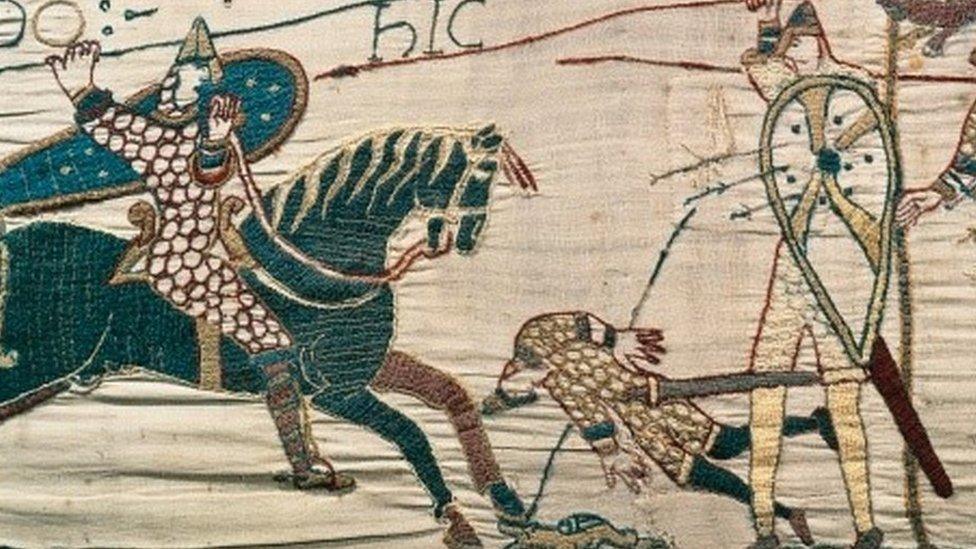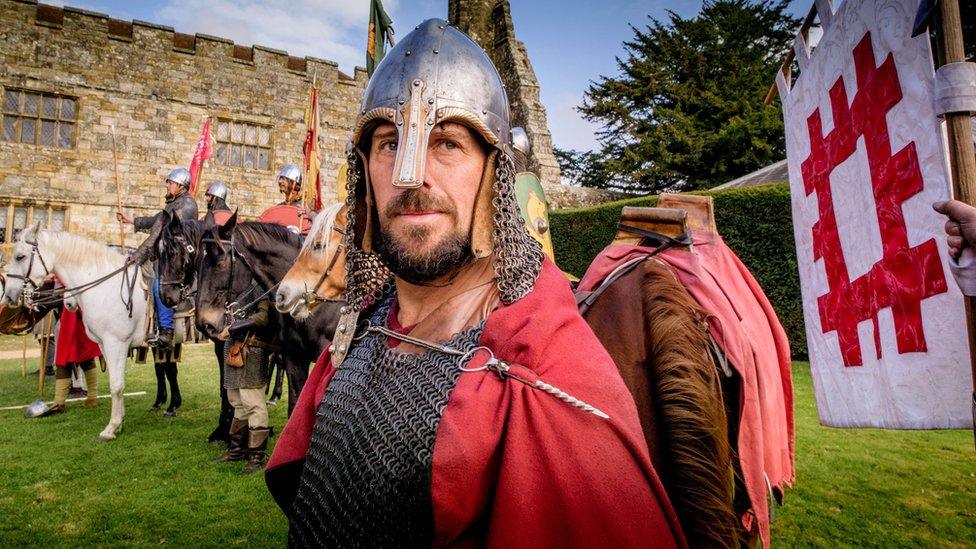William the Conqueror bust unveiled for 1066 anniversary
- Published

The bronze bust of William the Conqueror will go on display in Berkhamsted
A bronze bust of William the Conqueror has been created to mark the 950th anniversary of the Battle of Hastings.
The artwork was unveiled at Berkhamsted Castle in Hertfordshire, where English leaders surrendered to William in 1066.
It will go on permanent public display somewhere in Berkhamsted, though a location has not yet been decided.
Businessman Jon Culverhouse, who commissioned the sculpture, wants it to be displayed outdoors in an easily-accessible place.
He said: "There are several issues to consider such as protecting it from vandalism.
"Talks are under way with local councils and English Heritage but it could take six months for a final decision to be made."
How the battle of Hastings anniversary is being marked
Discover more at BBC iWonder: Why should I care about 1066?
Sculptor Peter Walker said the work is unique: "There are no portraits of William other than one from the 17th century, and the few stone sculptures that exist are generic.
"However in researching him there is evidence he was a stocky, very powerfully built man and I have tried to give this sculpture a sense of his potency."

A detail in The Bayeux Tapestry depicts Harold being killed by a chance arrow
The Battle of Hastings took place on 14 October 1066 and was fought between William of Normandy's army from France and King Harold II's English army.
More than 10,000 people were killed including Harold who, legend has it, died from an arrow in the eye, as depicted on the Bayeux Tapestry.
The Anglo-Saxons had ruled the land for over 600 years since the Roman times.
Norman rule changed the course of English history, leading to permanent changes to language and architecture.
- Published14 October 2016

- Published10 October 2016
